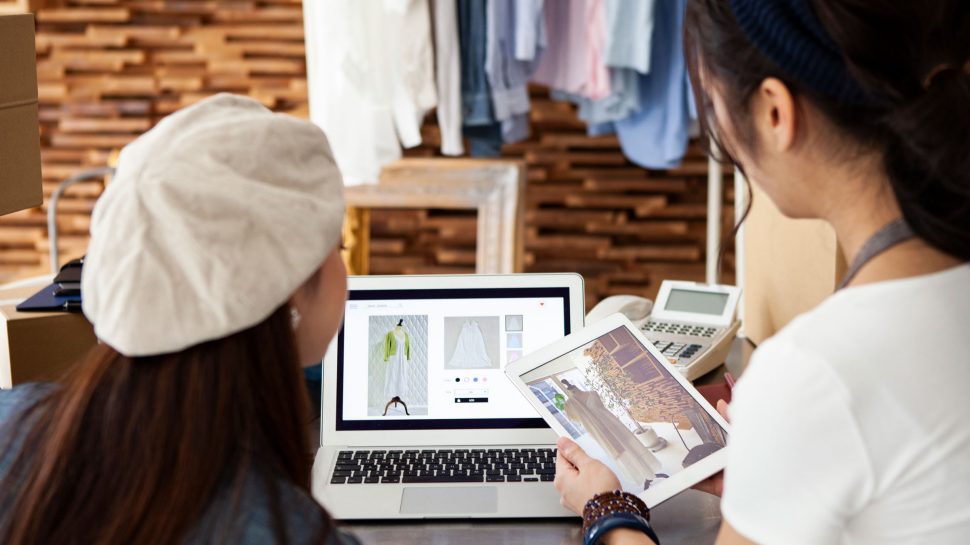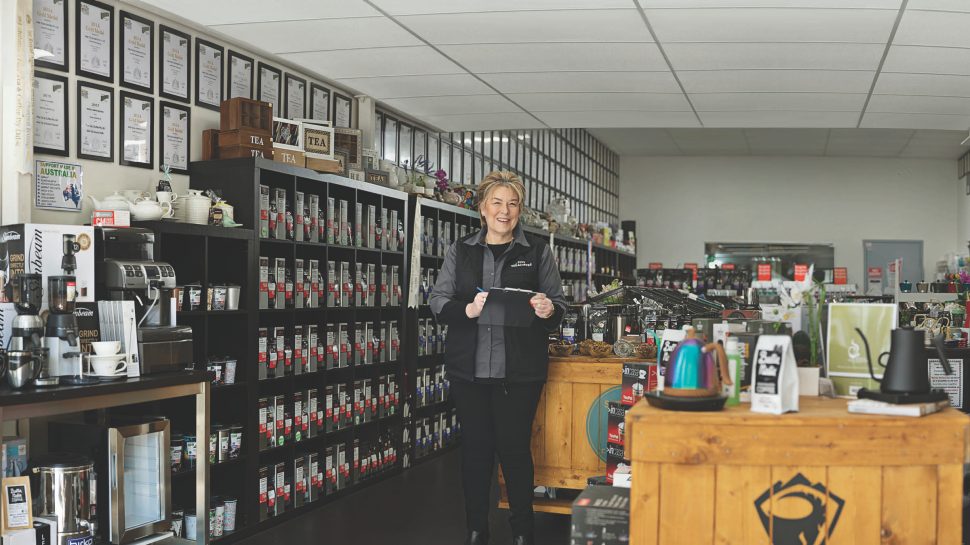Next big changes for retail
Futurist Anders Sörman-Nilsson believes consumer behaviour trends adopted during COVID are set to continue – and could fuel the next wave of creativity and growth in eCommerce. He shares three major trends worth considering, while Be Fit Food’s Kate Save reflects on where her healthy meal delivery business is heading next.

Key points
- Consumer behaviour has shifted to wanting even more convenience and personalisation, and they are likely to make more local, sustainable choices.
- Digital transformation is set to continue – from contactless payments to personalised experiences and guidance.
- Think ‘local and sustainable’ when it comes to every stage of the supply chain – from point of origin right through to your physical stores.
It has been a pivotal 12 months for the retail sector. The response to the coronavirus pandemic accelerated the adoption of online shopping – and consumer behaviour has undergone a transformational shift.
Retailers who were quick to adapt, and meet their customers’ needs for even greater convenience along with safety, saw unprecedented opportunities for growth. But those who were slower to adapt may have struggled.
“2020 was both a circuit breaker of old retail patterns and a massive accelerator of digital transformation,” says Futurist Anders Sörman-Nilsson, who forecasted the risks of failing to invest in digital eight years ago in his book Digilogue: How to Win the Digital Minds and Analogue Hearts of Tomorrow's Customer.
When Anders scenario-plans with organisations, he focuses on investing in the right trends. “It’s really about risk management,” he explains. “And in a year where technology was our lifeline, those who had already made the investment did well.”
So where should your business focus its energies to stay ahead of the next trends in retail?
“Retail brands should not assume that once the vaccine comes out, everyone will return to the old normal of physical retail,” Anders suggests. “But I do think we might see retail go through a renaissance as a result of more investment in retraining staff to shift from ‘checkout support’ to personal adviser and curator, and augmenting their human intelligence with new technology.”
Redefining customer-centricity
According to recent global research by EY, consumer behaviours are changing fast, and they have three core demands: make my life easier, make it feel better and make it more fulfilling.1 They describe this pivotal moment in the renaissance as an opportunity to strengthen relationships with customers through:
- invisible, time-saving convenience
- indispensable problem-solving, and
- intimate experiences.2
Anders agrees customers have redefined the rules of engagement.
“We are seeing shifts towards hyper-localisation within our communities. Personalisation is also more accessible, because digital has democratised access to technology for businesses of all sizes. Plus the rise of contactless, which solves that safety concern.”
He suggests focusing on the following three trends when prioritising investment.
1. Shopping becomes less menial and more meaningful
From payments to home food delivery, consumers learned to avoid ‘the human touch’ in 2020 for safety reasons. During the pandemic, eftpos claimed 400% growth in its mobile payments business as Australian consumers turned to contactless payments.3
For Anders, digital technology is the key to making transactions “more humane and less mundane” and removing the last points of friction. That could be through AI taking care of routine questions online via chatbot, freeing humans to focus on more complex advice. Or online Zoom consultations, as fashion retailer Cue trialled recently.
Be Fit Food delivers snap-frozen wholefood meals direct to customers across Australia to help them ‘eat themselves better.’ Founder and accredited dietitian and exercise physiologist Kate Save says the convenience of healthy pre-prepared meals became even more important during 2020. “Even though people were working from home, they were more time poor than ever with home-schooling, house duties and managing a family,” she says.
She has also invested in new technology to help guide them on their personal journey to better health. This includes teaming up with a body composition testing business mPort Health Pods.
“You can create a 3D avatar of yourself to visualise progress, and an annual pass gives you access to any pod around the country,” explains Kate. “We wanted to give our clients a tool to measure things their scales cannot. We also started working with a DNA testing company to give clients more knowledge. It helps them stay motivated with making their health a priority.”
2. The rise of hyper-local commerce
“There’s this idea now that geography doesn’t really matter anymore, that people are untethering from the CBD and moving to regional and lifestyle areas because they can work anywhere,” says Anders.
“We call this ‘connect-ography’.” He believes it will change retail’s physical footprint away from big flagship city stores and into local communities.
“For example, where I live (in Sydney’s Northern Beaches), Australian fashion labels bassike and Ephemera have recently opened their new flagship stores in Avalon Beach,” he says.
Kate says clients can pick up her meals in her two stores as well as a selection of local supermarkets and pharmacies. She also uses Australia Post to ship same day within Melbourne metro areas for a flat $7 surcharge.
Kate says online orders increased 100% from January to November 2020. She says 70% of her customers in that period were based in Victoria, which faced an extended period of strict lockdown regulations. “It became a lot clearer just how quickly health can be taken from you,” she says. “So we’ve also set up a health support network, to give customers access to local services in their community.”
3. The ‘eco’ in recovery
Anders believes sustainability will play a major role in post-pandemic recovery, and consumers expect retail brands to reassure them they are doing their part.
“For example, my delivery notification for my son’s Christmas present also advised me the shipment was carbon offset,” notes Anders. “Consumers will prioritise brands that do good for the planet – it’s no longer about just sourcing the cheapest goods because we’ve realised just how fragile our supply chains can be.”
Kate says she is always challenging her team to put sustainability first in their decisions. “It’s making sure our packaging choices are environmentally sound, and minimising food waste. Because we source as much as we can locally, and make everything here locally and snap-freeze it fresh, there’s very little waste.”
Retail brands that can tap into these three trends may be better equipped to engage more meaningfully with customers, and create longer-term loyal relationships.
Anders predicts we will see “the rise of sustainable brands who wear their hearts on their sleeve, showing empathy for their customers, and enabling transactions in contactless, safe ways.”
“Retailers are bringing humanity and creativity to these relationships, and that is what will create this new retail renaissance.”
Get the latest eCommerce insights
On average, an additional million households shopped online each month in 2020 compared to 2019 – and online was a critical channel for Australian shoppers in the festive season.
1 Three ‘I’s that could reframe the future of retail, EY, December 1 2020
2 Three ‘I’s that could reframe the future of retail, EY, December 1 2020
3 400% growth in mobile payments, Retail World, September 1 2020
This advice is general in nature, and doesn't consider your personal situation. You should consider your own needs and the terms and conditions before making a decision to buy the product.



